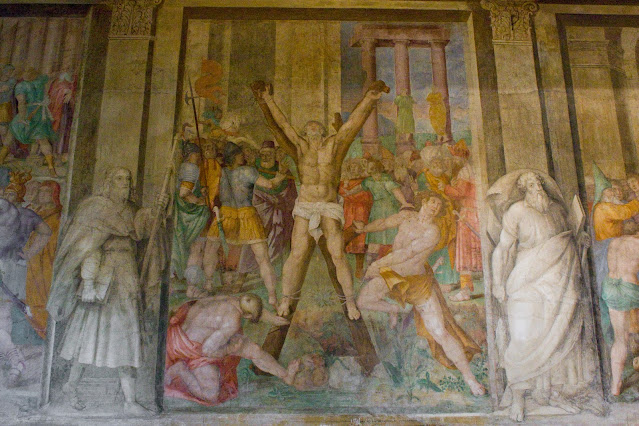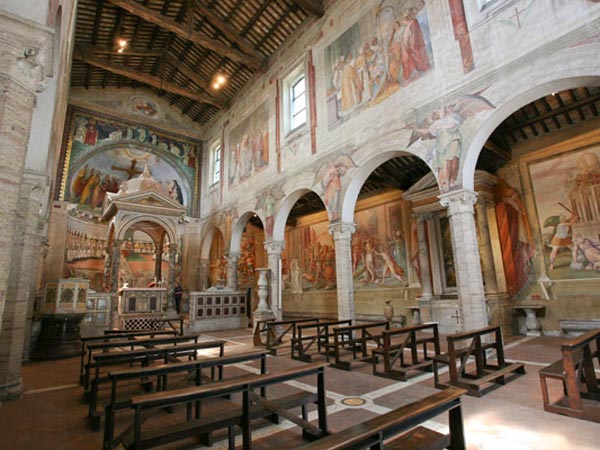I thought it might be of interest to take a slightly deeper dive into this aspect of the church's decorative scheme more specifically as it is one of those subjects that is surprisingly rare -- at least as a condensed subject -- for while there are many churches and basilicas which might showcase this or that scene of martyrdom for this or that saint, to find them so condensed into one building in this is quite rare by comparison (though there is another such church in Rome too which we will feature at another time).
The cycle of frescoes are by the sixteenth century Italian Mannerist painter, Niccolò Pomarancio (Circignani) and date to around 1597. They extend around the entirety of the lower register of the church, many of them depicting the martydom of the various apostles. (The upper tier of frescoes show scenes from the life of Ss. Nereo, Achilleo, Domitilla and so on, as well as early pontiffs.)
Here is a slightly closer look at some of these frescoes (many of which were taken by our own Fra Lawrence Lew, OP).
 |
| The Martyrdom of St. Paul |
 |
| Martyrdom of St. Jude Thaddeus |
 |
| Martyrdom of St. Andrew |
 |
| Martyrdoms of Ss. Bartholomew and Philip |
 |
| Martyrdom of St. Simon the Zealot |
.jpeg) |
| The martyrdoms of Ss. James the Lesser, Thomas and Matthew |
 |
| Martyrdom of St. Peter |
 |
| Martyrdom of St. John the Evangelist (left) and another view of the martyrdom of St. Bartholomew (right) |














